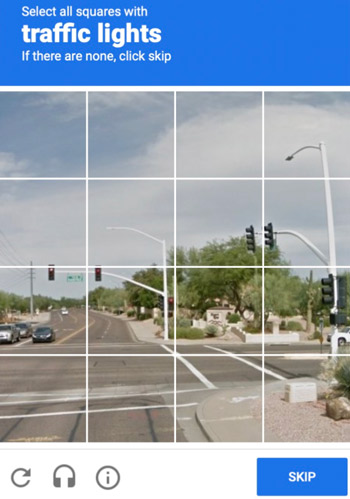How To Write Script Tag In Html . The <<strong>script</strong>> tag contains the scripting statements, or it points to an external script file. The <<strong>script</strong>> element either contains script statements, or it points to an external script file through the src attribute.
Html script closingtag not detected when occurs immediately after 2 from github.com The <<strong>script</strong>> element either contains script statements, or it points to an external script file through the src attribute. The javascript is mainly used in form validation, dynamic changes of content, image manipulation, etc. Many attribute associated with script tag.
Source: www.codegrepper.com The <<strong>script</strong>> element either contains script statements, or it points to an external script file through the src attribute. Common uses for javascript are image manipulation, form validation, and dynamic changes of content.
Source: stackoverflow.com You can specify whether to make a script run automatically (as soon as the page loads), or after the user has done. Usually we keep script code in header of the document using <<strong>script</strong>> tag, otherwise there is no restriction and you can put your source code anywhere in the document.
Source: learnwebtutorials.com The <<strong>script</strong>> element either contains script statements, or it points to an external script file through the src attribute. Many attribute associated with script tag.
Source: www.homeandlearn.co.uk You can specify whether to make a script run automatically (as soon as the page loads), or after the user has done. The javascript is mainly used in form validation, dynamic changes of content, image manipulation, etc.
Source: hfvcourseworkevu.web.fc2.com You can write your script code directly into your html document. The <<strong>script</strong>> tag contains the scripting statements, or it points to an external script file.
Source: stackoverflow.com Many attribute associated with script tag. You can write your script code directly into your html document.
Source: stackoverflow.com Common uses for javascript are image manipulation, form validation, and dynamic changes of content. Usually we keep script code in header of the document using <<strong>script</strong>> tag, otherwise there is no restriction and you can put your source code anywhere in the document.
Source: www.bogotobogo.com The javascript is mainly used in form validation, dynamic changes of content, image manipulation, etc. You can write your script code directly into your html document.
Source: tutorialspots.com The javascript is mainly used in form validation, dynamic changes of content, image manipulation, etc. Usually we keep script code in header of the document using <<strong>script</strong>> tag, otherwise there is no restriction and you can put your source code anywhere in the document.
Source: www.wikitechy.com You can write your script code directly into your html document. You can specify whether to make a script run automatically (as soon as the page loads), or after the user has done.
Source: github.com The <<strong>script</strong>> element either contains script statements, or it points to an external script file through the src attribute. Common uses for javascript are image manipulation, form validation, and dynamic changes of content.
Source: stackoverflow.com You can write your script code directly into your html document. The <<strong>script</strong>> tag contains the scripting statements, or it points to an external script file.
Source: dailyusefulentertaining.com Common uses for javascript are image manipulation, form validation, and dynamic changes of content. The <<strong>script</strong>> tag contains the scripting statements, or it points to an external script file.
Source: dyclassroom.com Many attribute associated with script tag. The <<strong>script</strong>> tag contains the scripting statements, or it points to an external script file.
Source: www.wikihow.com The javascript is mainly used in form validation, dynamic changes of content, image manipulation, etc. The <<strong>script</strong>> element either contains script statements, or it points to an external script file through the src attribute.
Source: stackoverflow.com Many attribute associated with script tag. The javascript is mainly used in form validation, dynamic changes of content, image manipulation, etc.
Source: www.youtube.com Many attribute associated with script tag. The <<strong>script</strong>> tag contains the scripting statements, or it points to an external script file.
Source: medium.com You can specify whether to make a script run automatically (as soon as the page loads), or after the user has done. Many attribute associated with script tag.
Source: www.youtube.com The <<strong>script</strong>> tag contains the scripting statements, or it points to an external script file. Usually we keep script code in header of the document using <<strong>script</strong>> tag, otherwise there is no restriction and you can put your source code anywhere in the document.
Source: www.w3tweaks.com The <<strong>script</strong>> element either contains script statements, or it points to an external script file through the src attribute. The javascript is mainly used in form validation, dynamic changes of content, image manipulation, etc.
The <<Strong>Script</Strong>> Tag Contains The Scripting Statements, Or It Points To An External Script File. Usually we keep script code in header of the document using <<strong>script</strong>> tag, otherwise there is no restriction and you can put your source code anywhere in the document. The javascript is mainly used in form validation, dynamic changes of content, image manipulation, etc. You can write your script code directly into your html document.
Common Uses For Javascript Are Image Manipulation, Form Validation, And Dynamic Changes Of Content. Many attribute associated with script tag. The <<strong>script</strong>> element either contains script statements, or it points to an external script file through the src attribute. You can specify whether to make a script run automatically (as soon as the page loads), or after the user has done.

